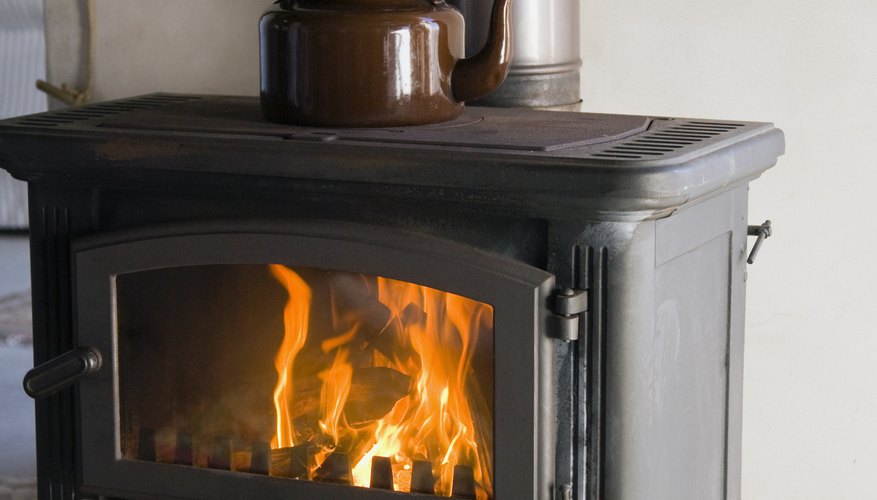Safe wood stove installations require a heat shield that will prevent heat from the wood stove from creating a fire hazard in the building materials that form the exterior wall. Hardi cement board is an inexpensive solution that will form the foundation of an effective heat shield for any application. Hardi cement board is also designed to have ceramic, porcelain or stone tiles installed over it to cover and beautify the heat shield after it is installed. Constructing the heat shield itself is a relatively easy process.
- Safe wood stove installations require a heat shield that will prevent heat from the wood stove from creating a fire hazard in the building materials that form the exterior wall.
- Hardi cement board is also designed to have ceramic, porcelain or stone tiles installed over it to cover and beautify the heat shield after it is installed.
Use an electric stud finder to find the studs in the wall behind the position that you will place the wood stove. Mark their positions with a pencil.
Drill pilot holes through 5 cm x 5 cm 2.4 m (2 inch x 2 inch x 8 foot) pieces of ltimber every 30 cm (12 inches) using an electric drill and a drill bit smaller in diameter than the screws. One piece of lumber is required for each wall stud that will be covered by the Hardi cement board. Shorten them if the heat shield will not cover the wall from floor to ceiling.
Attach the 5 cm x 5 cm 2.4 m (2 inch x 2 inch x 8 foot) pieces of timber directly to the wall studs through the drywall using 7.5 cm (3 inch) plasterboard screws. Countersink the screw heads into the 5 cm x 5 cm 2.4 m (2 inch x 2 inch x 8 foot) pieces of timber at least 6 mm (1/4 inch).
Attach 1.3 cm (1/2 inch) Hardi cement board directly to the 5 cm x 5 cm 2.4 m (2 inch x 2 inch x 8 foot) pieces of timber using 4.1 cm (1 5/8 inch) backer board screws. Apply screws every six inches. Cut each board to width so seams will land directly over one of the 5 cm x 5 cm 2.4 m (2 inch x 2 inch x 8 foot) pieces of timber. Hardi cement board is most easily cut using a masonry blade and a circular saw so the cut edge remains stable after cutting.
